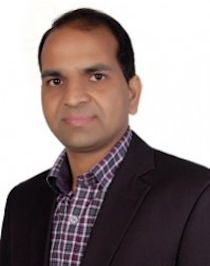Create value with the Medical Internet of Things (MIoT): Part 2

Bhoopathi Rapolu, Cyient
In the first part of this series, Bhoopathi Rapolu, the head of analytics for EMEA at Cyient, discussed how the increasing connectivity of medical devices – or the Internet of Things (IoT) – is leading to an explosion in healthcare big data. In turn, this growing bank of data is opening up new avenues for healthcare operations, which has the potential to totally transform the way we look at healthcare. In this second and final part of the series, he explores further ways in which healthcare organisations can look to take full advantage of the IoT.From tracking hospital assets and patients with real-time location systems and radio-frequency identification to remotely monitoring hospital equipment, the global healthcare sector is in for a dramatic change. Soon patients won’t need to visit the doctors for a blood-pressure reading: machines will be able to automatically take their readings and inform both them and their doctor if any anomalies arise. Compare that to say your bank notifying you when your account is overdrawn, and it doesn’t seem such a crazy suggestion. Some companies such as BodyMedia, a leading medical technology company, have already begun exploring this space by developing sophisticated algorithms which measure patients’ physical activity and designing dashboards which interpret and illustrate readings taken in real-time – a simple and straightforward solution that actually sells today.
The potential within this sector is enormous, and it’s conceivable that in the not-too-distant future, every human body will be connected to the network through worn, non-intrusive biomedical devices, many of which will be embedded in everyday clothing. Manufacturers may initially consider launching such technologies in less-regulated markets in the developing world, from which more innovation originates and laws governing the use of such devices aren’t yet in place.
Embrace unholy alliances
We are living in an age of knowledge spillovers, where innovation within one firm/sector often has the unintended effect of stimulating growth within a neighbouring sector or rival firm. These spillovers make spectacular innovations possible, as firms begin to identify seemingly unrelated players collaborating with them to create value. For example, Ford is working with the healthcare industry on a solution that would notify a nearby hospital if a person suffers a heart attack in their car, and can send an ambulance before the person is even aware they are having one. General Motors’ subsidiary OnStar is also one such application built with on the back of an unholy alliance; based on wide-ranging vehicle sensor data, OnStar is an in-built software installed in GM’s cars which notifies emergency services and hospitals of car crashes and potential injuries.
Look for secondary and tertiary value from data
Usually it’s easier to come up with a use-case that solves a well-known (old) problem in a new way (through technology), as just described in the asset tracking use case. But it’s often the subsequent uses of data that can create interesting solutions in the market.
For example, many people exercise unevenly, distributing more weight on one leg than the other, which can lead to injuries. Wouldn’t it be beneficial if your shoes could warn you about your unhealthy exercise habits so that you can do something about it and avoid an injury? Second, surely a running shoes manufacturer would benefit from knowing how their products are being used, how often, and where most wear and tear occurs, so that they develop better shoes? What’s more, the data that these devices generate will only help to improve their quality, as this intelligence is added back into the devices and other healthcare applications. This could help create a cycle of improvement, which is undoubtedly a positive development and could see the MIoT market really explode into life.
It’s clear that medical devices will soon become commonplace within the healthcare sector, and that they will form part of an enriched and broad MIoT. Furthermore, with this exponential increase in both connected medical devices and the continual improvements being made in processing data showing no sign of abating, imagination is the only remaining hurdle to overcome if developers are to bring the next big app to market, and bring to the world the healthcare of tomorrow.
